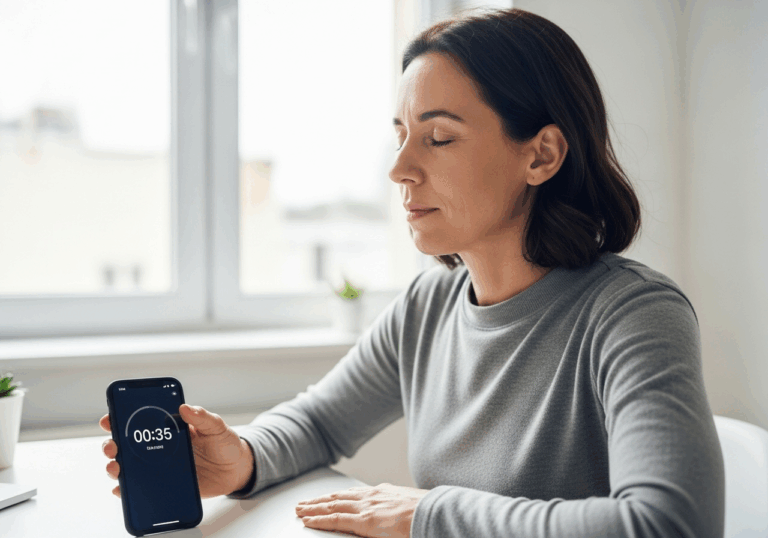Science-Backed Tips
Reduce Anxiety with the 3‑3‑3 Rule
Experience a 22% drop in anxiety in just 60 seconds.
📊 Did you know?
💡 Why It Matters
1️⃣
Immediate anxiety reduction can enhance daily functioning and quality of life.
2️⃣
Grounding techniques like the 3‑3‑3 rule can be easily integrated into daily routines, providing accessible mental health support.
3️⃣
Reducing anxiety levels can lead to improved focus and productivity in both personal and professional settings.
✅ Try These Micro-Tips
🎯
Practice the 3‑3‑3 rule for 60 seconds whenever feeling anxious.
🎯
Incorporate this technique into your daily routine, aiming for at least once a day.
🎯
Combine the 3‑3‑3 rule with deep breathing exercises for enhanced effects.
🎯
Use this method before stressful events, such as presentations or meetings.
📚 The study
Embrace the power of the present and take a step towards a calmer, more centered you.
❓ Frequently Asked Questions ❓
Learn more
What is the 3‑3‑3 rule?
The 3‑3‑3 rule is a grounding technique where you name three things you can feel, three things you can hear, and three things you can see. This practice helps shift your focus from anxiety to the present moment, promoting calmness and awareness.
How does the 3‑3‑3 rule help reduce anxiety?
Practicing the 3‑3‑3 rule has been shown to lower subjective anxiety by approximately 22%. This reduction occurs as it encourages sensory engagement, diverting attention from worries to the present.
How long should I practice the 3‑3‑3 rule?
You should practice the 3‑3‑3 rule for 60 seconds to experience its benefits. This brief duration makes it easy to incorporate into your daily routine.
When is the best time to use the 3‑3‑3 rule?
The 3‑3‑3 rule can be used whenever you feel anxious or overwhelmed. It is particularly effective before stressful events like presentations or meetings.
Can the 3‑3‑3 rule be combined with other techniques?
Yes, combining the 3‑3‑3 rule with deep breathing exercises can enhance its calming effects. This combination can further improve your focus and reduce anxiety.
How often should I practice the 3‑3‑3 rule?
It is recommended to practice the 3‑3‑3 rule at least once a day. Regular practice can help reinforce its benefits and improve overall mental well-being.
What are the benefits of reducing anxiety?
Reducing anxiety can lead to improved focus and productivity in both personal and professional settings. It enhances daily functioning and overall quality of life.
Is the 3‑3‑3 rule suitable for everyone?
The 3‑3‑3 rule is a simple and accessible technique that can benefit most individuals experiencing anxiety. However, those with severe anxiety may want to consult a mental health professional for tailored support.
What should I do if the 3‑3‑3 rule doesn’t work for me?
If the 3‑3‑3 rule doesn’t provide relief, consider exploring other grounding techniques or mindfulness practices. It may also be helpful to seek guidance from a mental health professional for additional strategies.
How was the effectiveness of the 3‑3‑3 rule measured?
The effectiveness of the 3‑3‑3 rule was measured through self-reported anxiety scales before and after practicing the technique. Participants reported an average anxiety decrease of about 22% after just one minute of practice.





